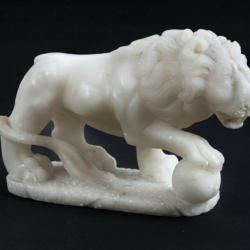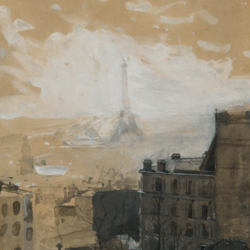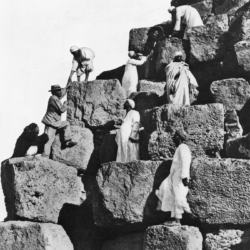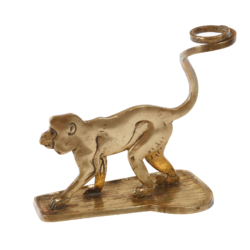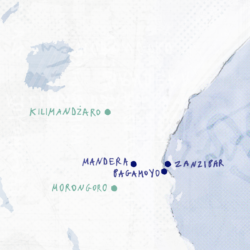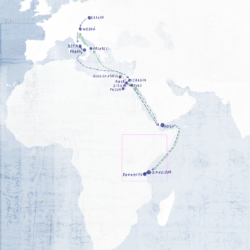
Africa: Chronicle of a disease foretold
As you can see, I got out of Africa alive, though it was close.[1]
Sienkiewicz presents Africa as a place where Europeans are taken ill and die. Indeed, disease and death appear to follow the writer throughout his journey to the Dark Continent. Death constitutes the framing device of Listy z Afryki (Letters from Africa). The book opens with a scene of the “great Schliemann” dying in a Neapolitan hotel[2] and ends with the suicide of Sienkiewicz’s fellow passenger and convalescent on an English steamer during the return voyage.
The onset of a disease marks the climax of Sienkiewicz’s 14-day hunting trip and his stay in Africa in general. We could conclude that, just as the high point of the writer’s American expedition was recovery in its multiple dimensions, so the closing act of the African experience is a debilitating illness, half-expected by Sienkiewicz due to his observation of the ailing and dying Europeans – like in one of the first sights of Zanzibar, described as follows:
I have to wait for my cases to be dug out from the innards of the ship, so in the meantime, I’m taking a closer look at some Germans who have come from the town to meet the newcomers. The first impression is horrifying. These men have death written all over their faces. Fever and anemia have left their marks on them as if sealing their fate. They are walking around, greeting and calling one another, their eyes are gleaming with joy at the arrival of a German ship so clearly that it is genuinely touching to see, but they all look like patients recovering from severe illness.[3]
Sienkiewicz did think about protecting himself from the risk. Having realized that Africa is not the fantasy he had expected, he recognized the extent of the health hazard and the difference between the healthy Californian and the lethal East African climates. This awareness is discernible not only in Listy z Afryki, which was written post factum but also in letters that were sent on the way. This is how Sienkiewicz was trying to reassure his mother-in-law:
As I promised, we will go through with this expedition only if neither I nor Tyszkiewicz develop even the slightest signs of yellow fever. If it happens, I am not going to set off at all; and if it happens during our trek, I promise I’ll turn everyone back, even that very day.[4]
Possibly, the most characteristic example can be found in the already quoted letter sent from Bagamoyo to Godlewski just before heading into the African interior:
Here comes the reason why I’m writing this letter. Please, remember to extend the duration of insurance cover for another six months […]. If I happen to bring some African fever-causing bug home with me and croak within half a year before I send you the manuscript, you will lose the money.[5]
It is noticeable that the writer took the risk of dying as a result of the African journey quite seriously. The informal, humorous style of the letter seems to be a mechanism for managing his fear, or premonition, of illness and death.
Nonetheless, we should be careful not to jump to conclusions by implying that it is specifically Africa that was portrayed by Sienkiewicz as space dominated by death. Certainly, it is highly probable – even inevitable – that the writer witnessed tropical diseases taking their toll, and that his African bout of yellow fever was worse than any other disease described in his letters from America. Another thing that should be taken into consideration is the evolution of the writer’s perspective on life and death. His letters from that period reveal that the matters of illness and dying had been on his mind ever since his marriage to Maria Sztekiewicz. The traumatic experience of seeing her decline and succumb to the disease made it even harder. He often wrote about health issues and his concerns about the well-being of himself, his children, sister- and parents-in-law. We may, therefore, conclude that Africa could have only intensified Sienkiewicz’s dread of being taken ill and dying, though it did not cause it. That fear was already the intrinsic trait of the writer’s epistolary style.
Przypisy
- H. Sienkiewicz, Listy [Letters], vol. 3, part 1, op.cit., p. 540; trans. J. M.
-
“Such mental pictures are like fog. They obscure any sunlight there may be, and make your day gloomy. As I was sitting in this mental fog, my dejection deepened when a dying man was brought into the hotel. He was carried by four men. His head was slumped to his chest, his eyes were closed, complexion sallow, arms hanging limp to the ground. The sombre group glided past me, and a minute later I was approached by the hotel manager. He asked me:
“Do you know who the sick man is?”
“No, I’m afraid not,” I replied.
“It’s the great Schliemann.”
Poor “great Schliemann”! He excavated Troy and Mycenae, his discoveries made him immortal, and now he was – dying…” (H. Sienkiewicz, Listy z Afryki [Letters from Africa], op.cit., p. 5; trans. J. M.). - Ibidem, p. 63, emphasis B. Sz.; trans. J. M.
- H. Sienkiewicz, Listy [Letters], vol. 5, part 1, op.cit., p. 335; trans. J. M.
- H. Sienkiewicz, Listy [Letters], vol. 1, part 2, op.cit., p. 156; trans. J. M.


